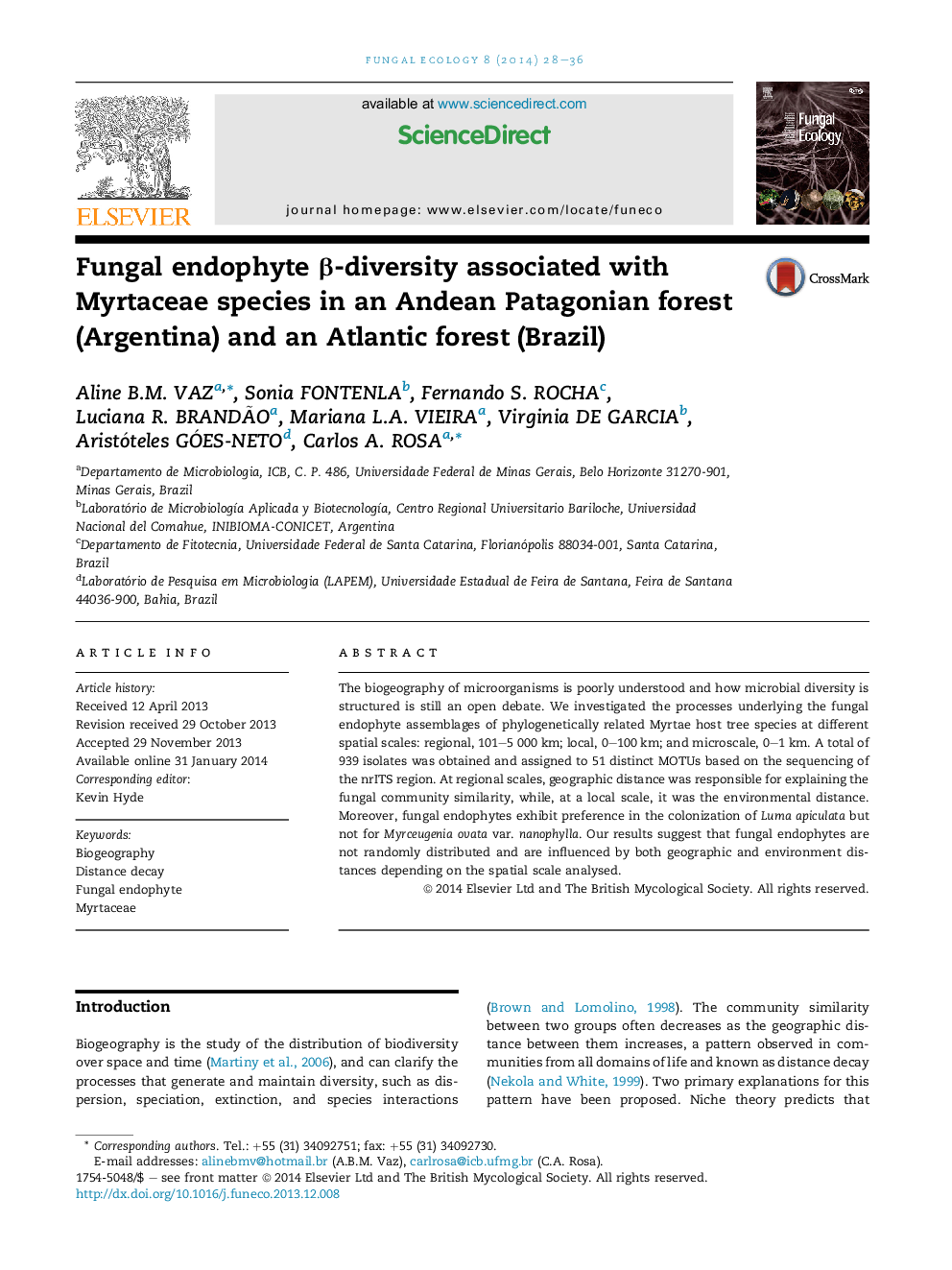| Article ID | Journal | Published Year | Pages | File Type |
|---|---|---|---|---|
| 8384709 | Fungal Ecology | 2014 | 9 Pages |
Abstract
The biogeography of microorganisms is poorly understood and how microbial diversity is structured is still an open debate. We investigated the processes underlying the fungal endophyte assemblages of phylogenetically related Myrtae host tree species at different spatial scales: regional, 101-5Â 000Â km; local, 0-100Â km; and microscale, 0-1Â km. A total of 939 isolates was obtained and assigned to 51 distinct MOTUs based on the sequencing of the nrITS region. At regional scales, geographic distance was responsible for explaining the fungal community similarity, while, at a local scale, it was the environmental distance. Moreover, fungal endophytes exhibit preference in the colonization of Luma apiculata but not for Myrceugenia ovata var. nanophylla. Our results suggest that fungal endophytes are not randomly distributed and are influenced by both geographic and environment distances depending on the spatial scale analysed.
Related Topics
Life Sciences
Agricultural and Biological Sciences
Ecology, Evolution, Behavior and Systematics
Authors
Aline B.M. Vaz, Sonia Fontenla, Fernando S. Rocha, Luciana R. Brandão, Mariana L.A. Vieira, Virginia de Garcia, Aristóteles Góes-Neto, Carlos A. Rosa,
